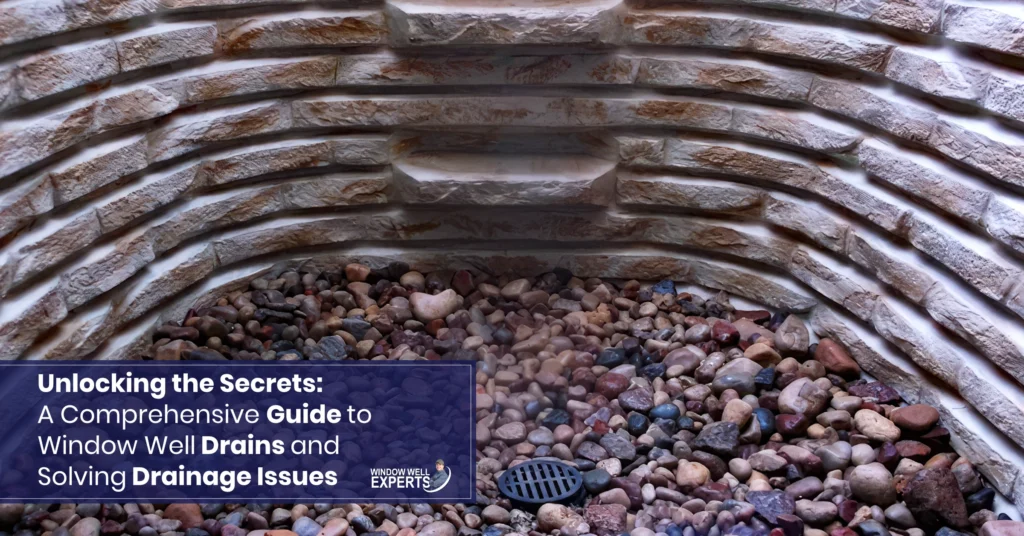For those considering a DIY solution for your basement window well drainage problem, it’s crucial to incorporate effective strategies into the installation process. As you can see in the photo above, the water has accumulated in this homeowner’s window well almost to the point of going over the lower sill of the window. In the photo below, the water has passed that point.
A functioning window well drainage system is critical to the health of your home. Unless this is a really lucky homeowner, there is water leaking into their basement around the window. As Experts, we have seen homes where the water pressure got so intense that it caves in the basement window completely, flooding the room.
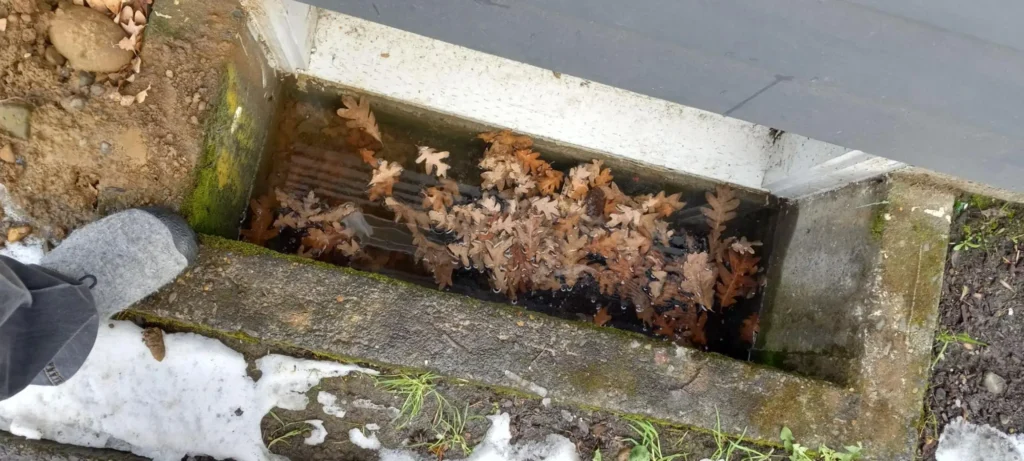
How basement window well drainage works
When purchasing a window well, be sure that you get a window well that is deep enough! Plan for 3” above grade (higher if it is a wet area, or if your home is on a slope) and 8-12” below the lower sill of the window. Don’t skimp on the depth of your well! You are asking for basement window well drainage problems if you do. Think of this extra depth as the “sink” that will hold water from rain or snow melt and allow it to absorb into the soil.
Passive window well drainage
Window well drainage is either passive or active. As the cross section diagram shows below, 8-12” of gravel in the bottom of the well is enough to allow water to passively permeate through to the subsoil below. This is the easiest DIY window well drainage system. It all depends on the natural absorption of water into the soil, and a clear window well. Overall, most window wells are installed this way with very few problems.
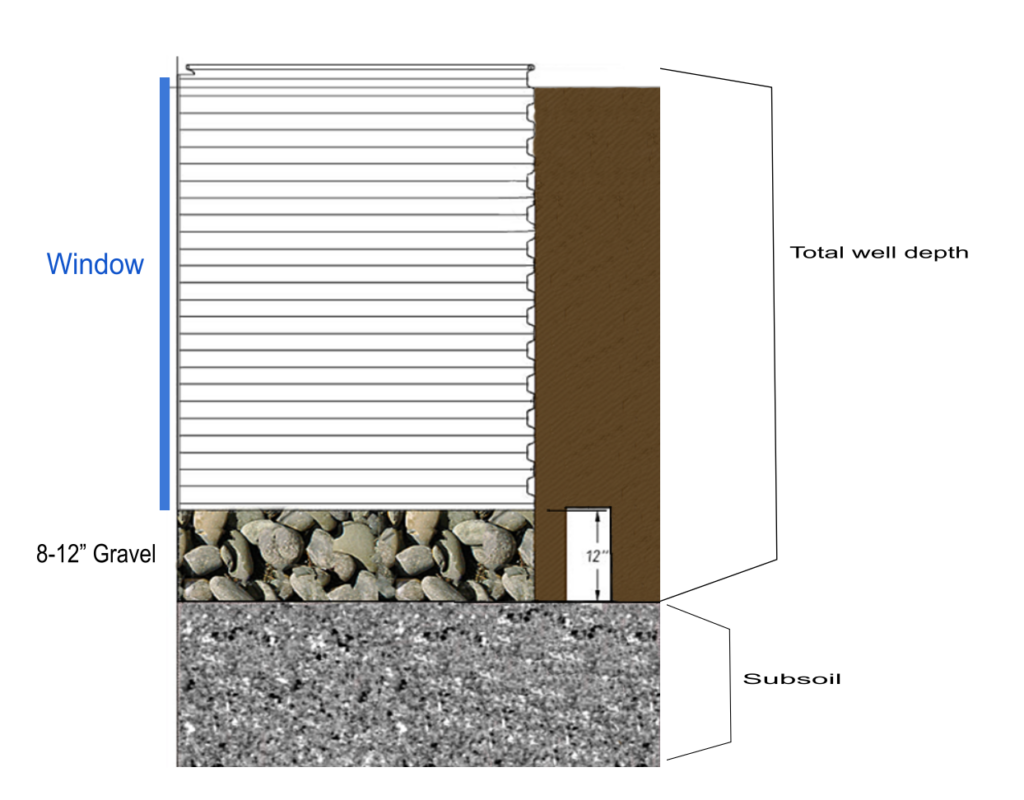
Window well drainage is either passive or active. As the cross section diagram shows below, 8-12” of gravel in the bottom of the well is enough to allow water to passively permeate through to the subsoil below. This is the easiest DIY window well drainage system. It all depends on the natural absorption of water into the soil, and a clear window well. Overall, most window wells are installed this way with very few problems.
Successful passive window well drainage does depend on some vigilance from the homeowner. Care must be taken that yard debris and other garbage does not accumulate in the bottom of the well. If accumulated leaves and debris in the bottom of the well are too thick, it will act like a plug in a drain – it will prevent water from draining through the gravel.
The water will then accumulate in the well, possibly causing the well to rust; also, if there is exterior wood trim around the window, constant moisture will cause the trim boards to rot.
Active window well drainage
Successful active window well drainage depends on a little more effort during installation. If your home is equipped with an external foundation drain tile, joining a drain from your window well into it is a logical thing. In areas with heavy rains, a properly installed drain will be a great help keeping your window wells drier.
To join the well drain to the drain tile keep in mind that:
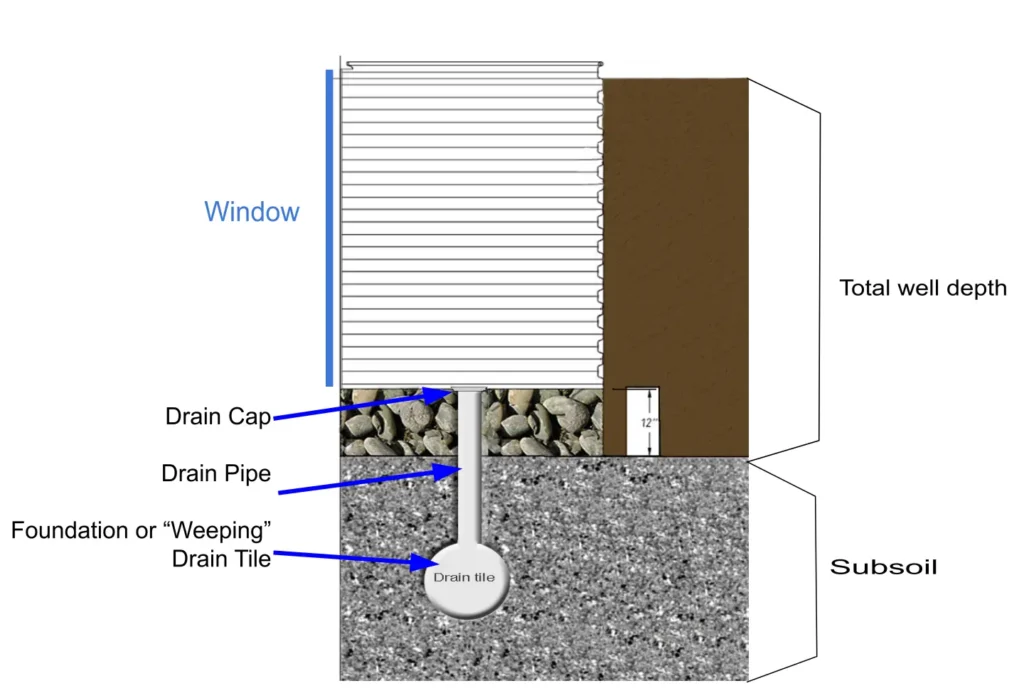
- Extra care must be taken when excavating for the window well installation so as not to damage the tile.
- Clearing the gravel close to the drain tile should not be done by machine.
- Make a note of how deep the gravel is around the tile before clearing it away.
- Some tiles have a fabric “sock” on them to prevent fine sediment from clogging the system. If you have this “sock” cut only as much as needed to T the drain into the drain tile.
- Replace gravel to the previous level before backfilling with subsoil, and firm the subsoil as you go, up to 8-12” below the lower sill of the window.
- Gravel 8-12” deep is still needed in the bottom of the well. Do not cover the drain cap with gravel.
- Install the well as shown in the directions.
Common basement window well drainage issue and solutions
The most common cause for a window well that is full of water, is a well that has debris and yard waste accumulated in the bottom of the well. If there is more than a half inch of this debris in it, it will stick together like wet newspaper and stop the natural capillary action of the water trickling down through the gravel and seeping into the ground. The water will sit on top of the leaves and debris like a sink that has a stopper in it.
Another cause of drainage issues is that the well is too shallow. The water falls into the well, and has nowhere to go. There is no catch basin for the water so once the soil in the bottom of the well becomes saturated the water will find the point of least resistance – usually around the window and into your basement.
Yet another problem is incorrect grading around the window well. See the photo above. Note how the backfill soil slopes away from the well. Contrast this photo with the one at the beginning of this article. Notice how the soil has accumulated over the concrete ledge of the well on the left side. There is nothing to stop the water from getting into the well.
After the well is installed, periodically check around the outside of the well, and add more soil if there is erosion or settling. Doing this will prevent the well shifting or collapsing. Once the grade is established, landscaping and mulch is a great way to keep the soil in place, and beautify your home.
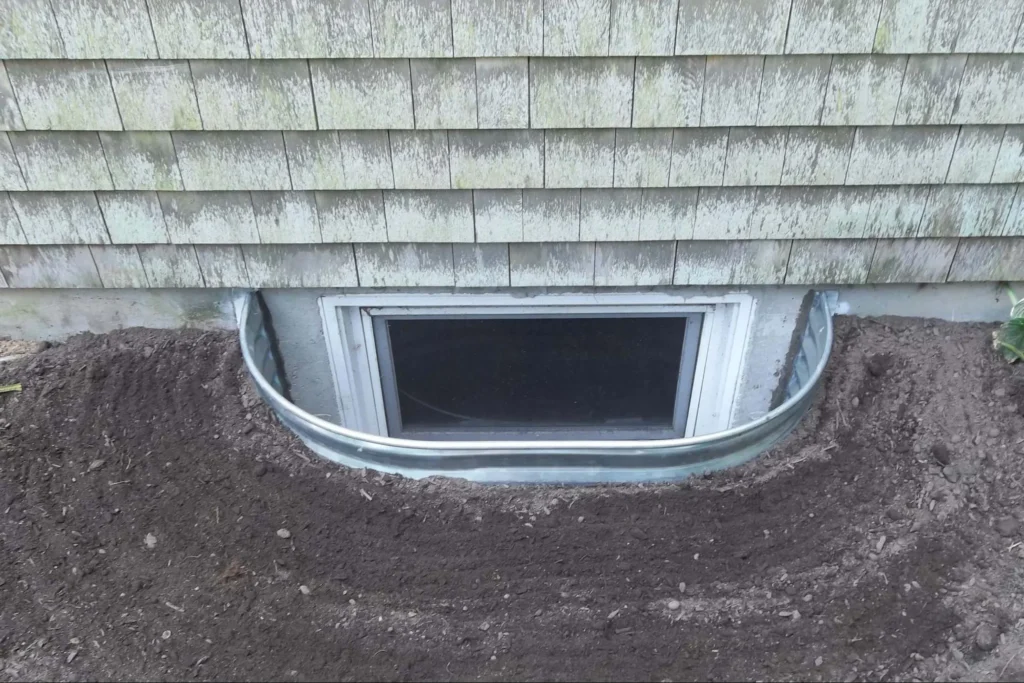
The ultimate solution: Window well covers
As you have read in the blog above, one of the main issues with window well drainage is keeping the bottom of the well clear, whether there is a drain or not.
Covering your window wells is the easiest way to keep window wells free from yard debris and other trash the wind blows your way. Some window well covers will even help keep the water out!
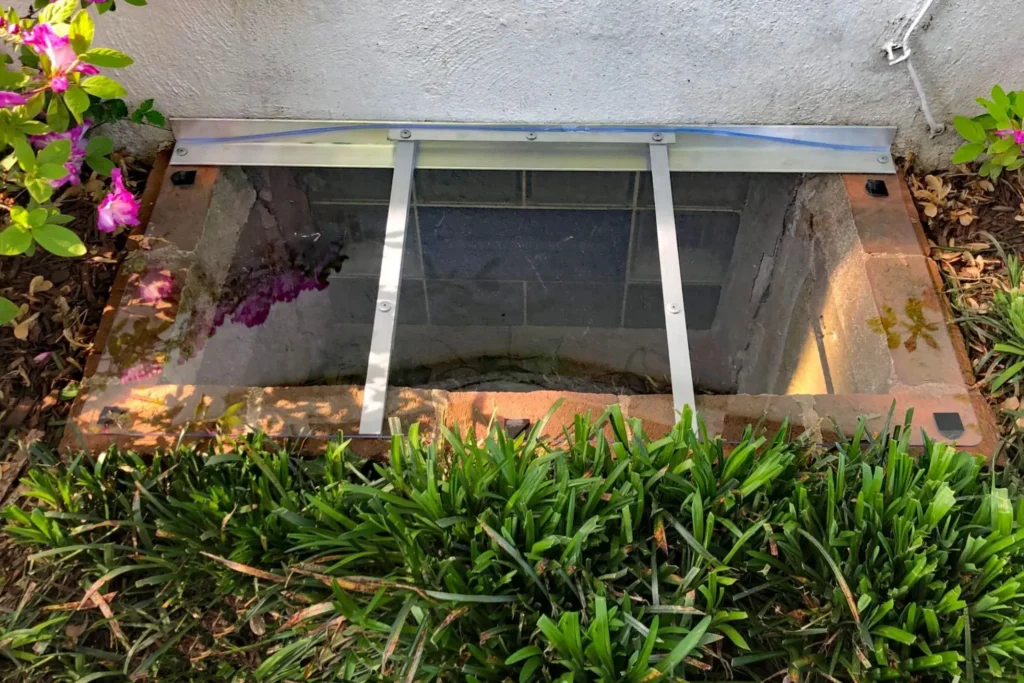
Consider the Sloped Window Well Cover shown above. It has up to a two inch slope that helps to drain water away from the window well. The fit helps keep most dirt and debris out as well. This style of cover will protect most wells, depending on your window type. If you have a crank out type of window that is above the lip of the well, an Atrium Window Well Cover will allow your window to open freely.
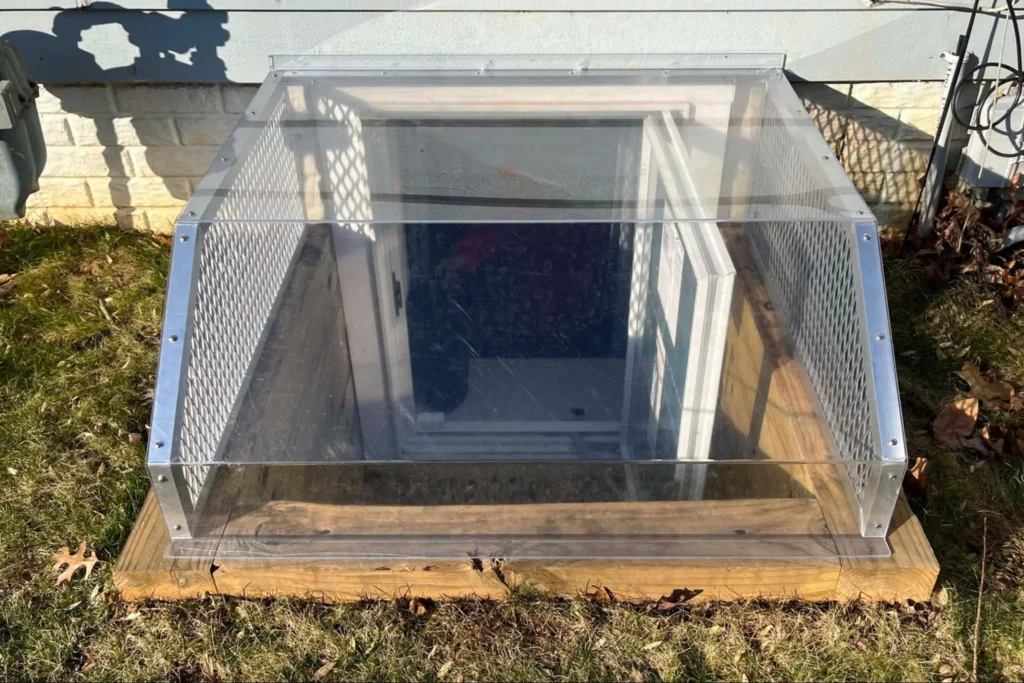
Super Slant covers are the best of all worlds. These covers keep out most of the debris, rain, and snow, but yet will allow ventilation of the window well, and fresh air into your basement as well.
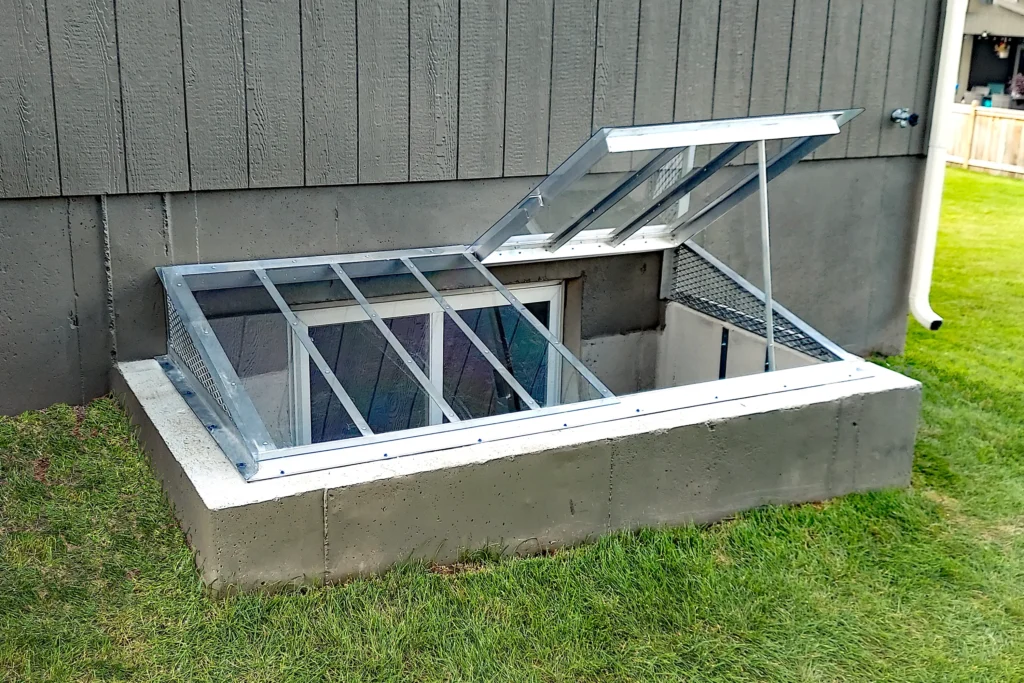
As you can see, a window well cover can make window well drainage problems almost disappear! Call us at 888-650-9355 option 2 to get your questions answered.
If you found the topic interesting and we’ve sparked your curiosity, be sure to explore more helpful articles available in the blog section of our website.
For additional tips on enhancing the appearance of your window wells through decorative materials, landscaping, proper lighting, and more, check out our article titled “How to Make Your Window Well Look Beautiful? Basement Window Well Decoration Ideas,” where we’ve compiled creative ideas for you.
If prioritizing safety is your preference, delve into our article “Enhancing Home Safety with Egress Ladders” where we guide you on increasing safety at home through the use of egress ladders. Learn more about the types of ladders available and their proper installation.

